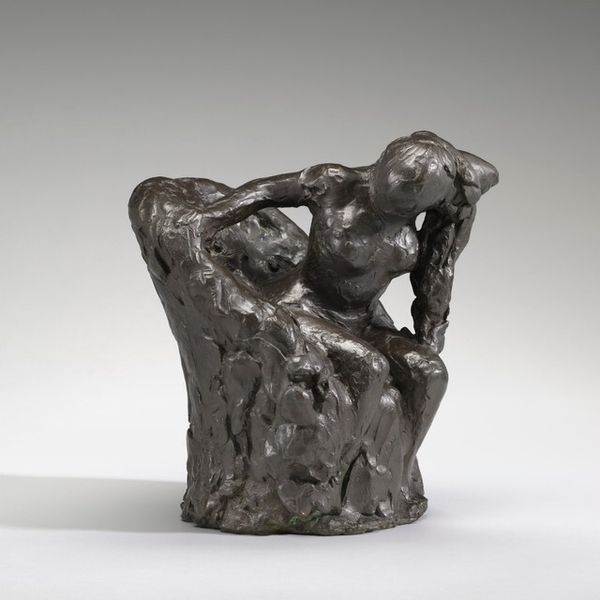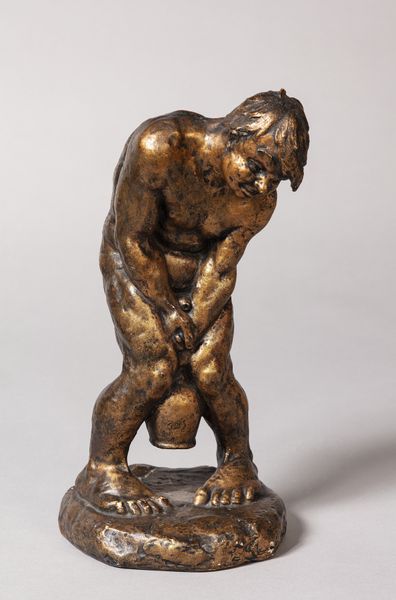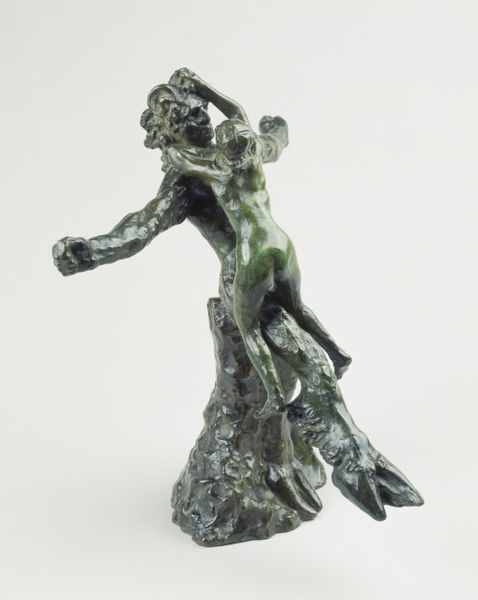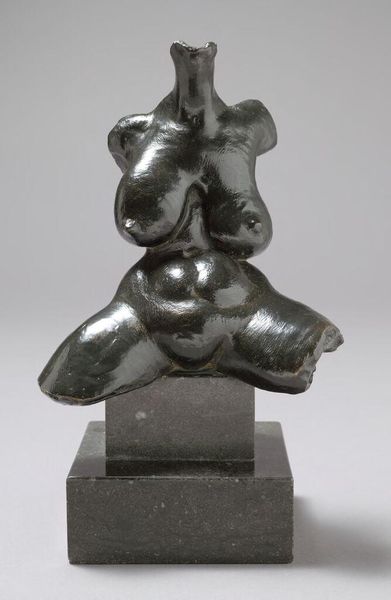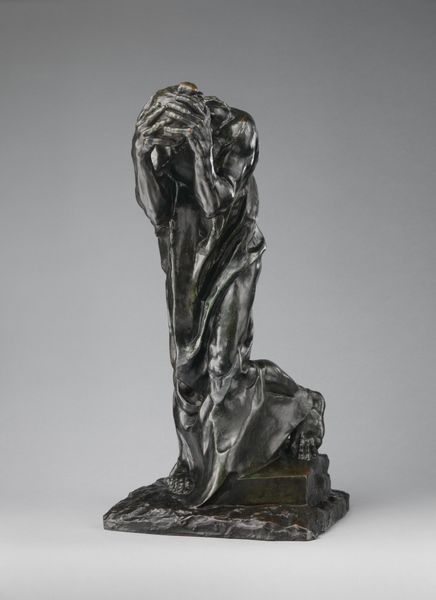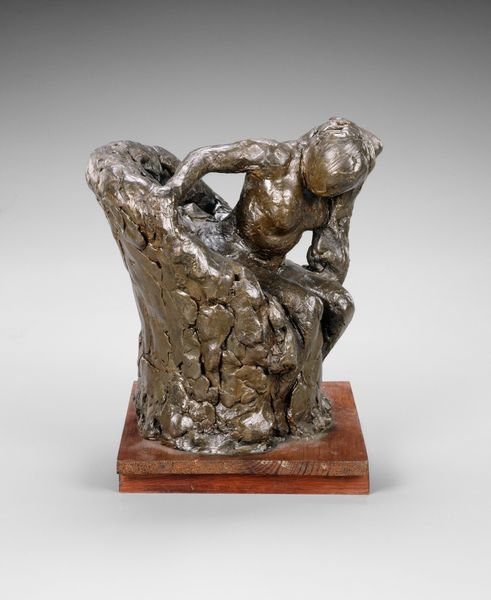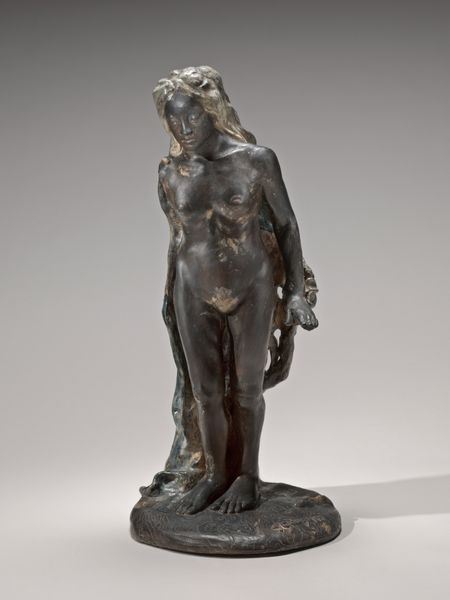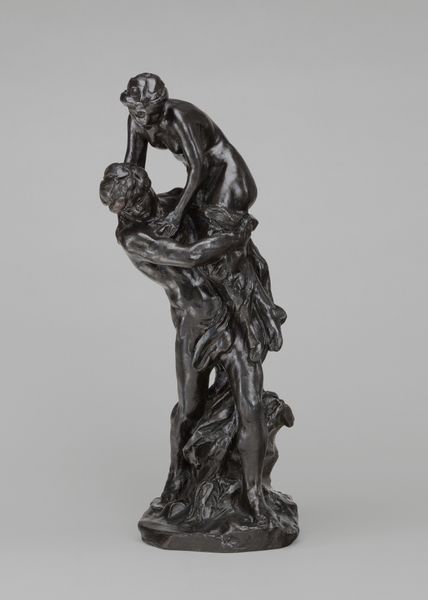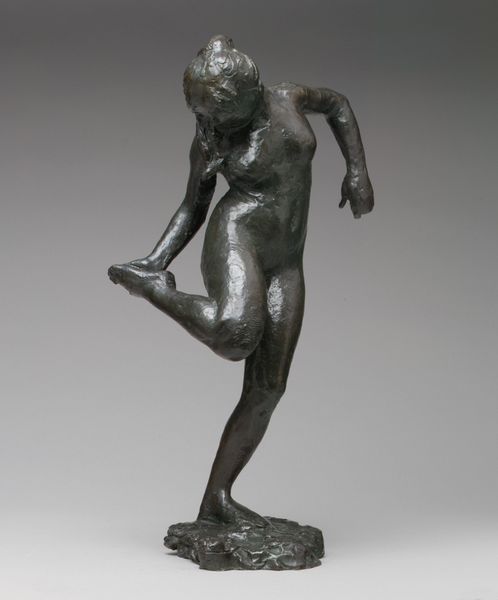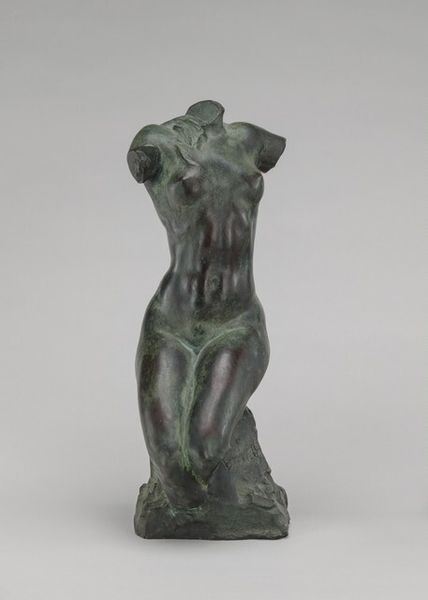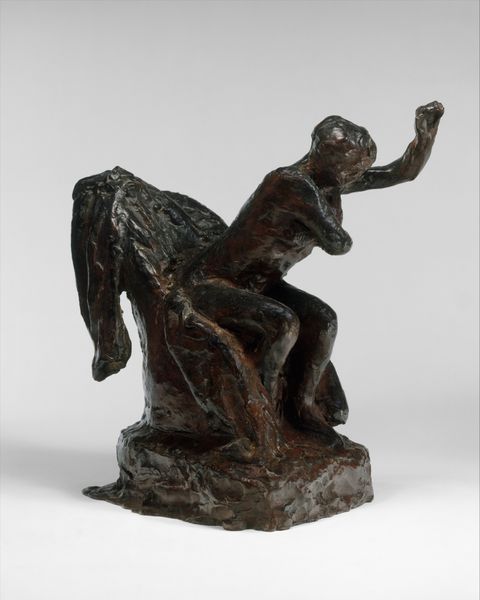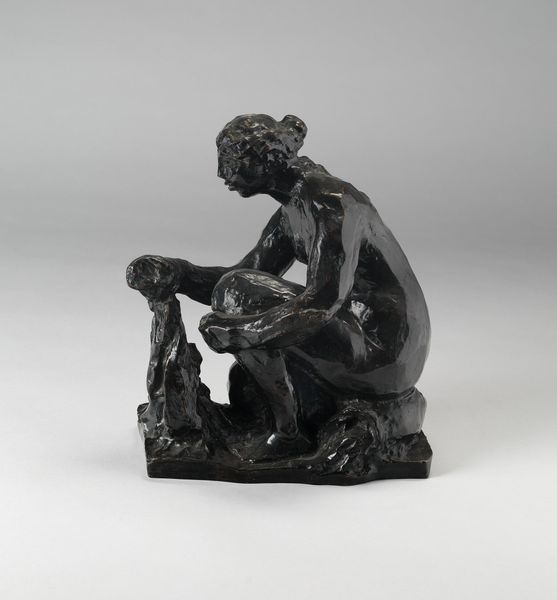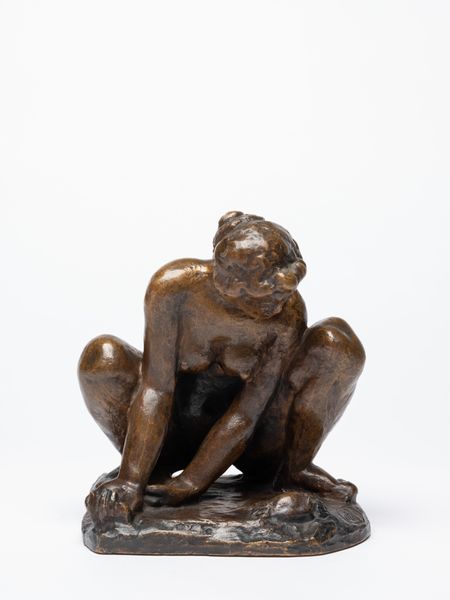
The Clenched Left Hand (Study for Hand of Pierre de Wiessant) 1880 - 1974
0:00
0:00
Dimensions: Overall (wt. confirmed): 18 1/4 × 10 3/8 × 7 5/8 in., 23.1 lb. (46.4 × 26.4 × 19.4 cm, 10.5 kg)
Copyright: Public Domain
Curator: Looking at this clenched bronze fist, I can’t help but imagine the inner turmoil of the figure it represents. There’s something so viscerally human about it. Editor: Absolutely. And that is Auguste Rodin's study for the Hand of Pierre de Wiessant, created somewhere between 1880 and 1974. It's currently held here at the Met. You immediately pick up on the power of raw emotion! Curator: It's like capturing a moment of suppressed fury. Makes me wonder, what's it like to hold such strength, and simultaneously hold back? How many of our gestures betray the stories we can’t always speak? Editor: Well, Pierre de Wiessant was one of the six Burghers of Calais who offered themselves as sacrifices to King Edward III in 1347, during the Hundred Years' War. This hand was meant for a figure in a larger monument. So it is a symbolic representation of sacrifice and desperation under dire political circumstances. The final sculpture sits in Calais and memorializes a fraught chapter of French national identity. Curator: That context…it definitely adds a layer of profound sadness, even despair. You almost feel like you’re looking at the seed of some terrible scream that hasn’t yet erupted. Editor: Rodin’s sculptures frequently explore these difficult themes. His goal was always, I think, to cut through polite idealism, and represent humanity in its full complexity and ambiguity. This work gives dignity to his humanity. Even broken. Even scared. Curator: It definitely leaves me contemplating the many burdens people carry, not only publicly but even in secret corners of themselves. The way the light catches the textures—rough, almost violently shaped—it all adds up to a captivating, concentrated charge. Editor: Indeed. Perhaps its unfinished, 'sketch-like' appearance allows for deeper access into his creative, but most importantly his emotive, process.
Comments
No comments
Be the first to comment and join the conversation on the ultimate creative platform.
